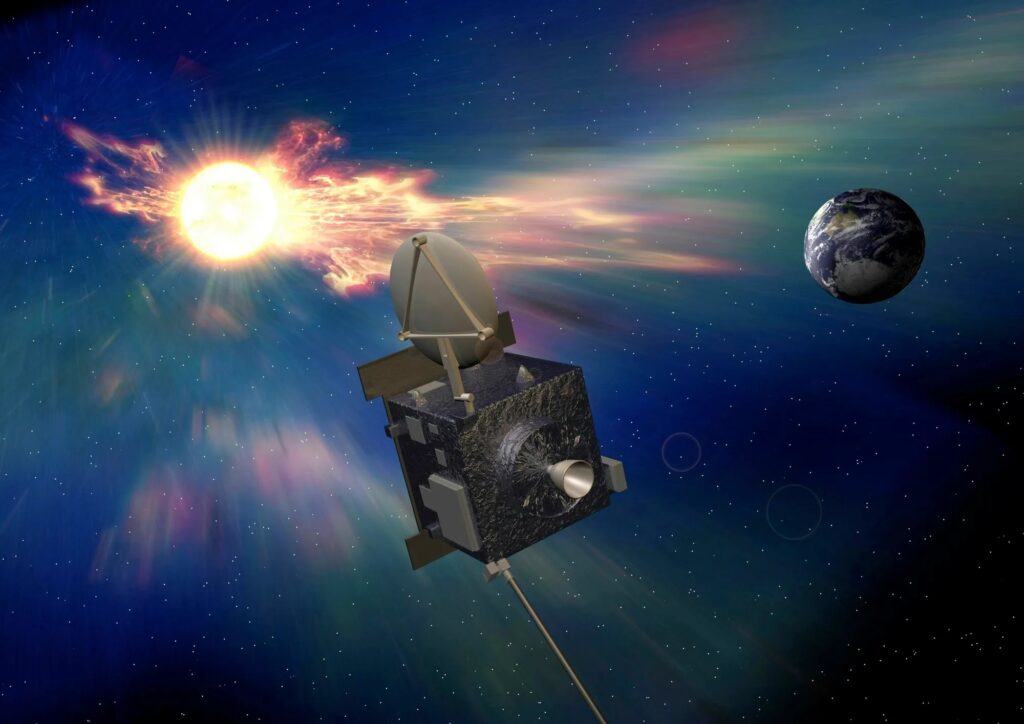After the plethora of orders in April, May’s orders seemed paltry. Nevertheless, there were a few to note:
The biggest order for a single mission was a €340 million (US$369 million) one to Airbus DS for the Vigil solar storm warning spacecraft. It is to operate from the Sun-Earth L5 Lagrangian point.

Artist impression of the Vigil solar activity monitoring spacecraft. Courtesy: Airbus DS
The GEO market is still alive, if not exactly thriving, as exemplified by the JSAT order for JSAT-31 satellite from Europe’s Thales Alenia Space, using its INSPIRE software defined platform/bus.
Starfish Space landed a US$37.5 million US Space Force contract to demonstrate a rendezvous and docking/on board servicing demonatation with a US military satellite asset.
Tomorrow.Io got a US$10.2 million contract to build two small weather satellites with microwave sounders for the US Department of Defense.
Having lost its first satellite HotSat-1 to imager failure, SatVu books SpaceX Falcon 9 rideshares to launch two thermal imaging satellites HotSat-2 and HotSat-3 on two separate launches in 2025
While not exactly an orders story, Redwire has been listing out its stable of satellite buses designed to operate in sub-300 km Very low Earth orbits(VLEO) here
Muon Space and the Earth Fire Alliance will launch a pathfinder satellite for their Wildfire Detection Satellite Constellation in 2025 with the first three operational sats a year later
Unseen labs is investing in a new generation of 150-kilogram satellites scheduled to begin launching in 2026 (After launching two satellites on a SpaceX Falcon 9 rideshare in March, the French startup operates a constellation of 13 cubesats focused on maritime domain awareness. Four additional Unseenlabs cubesats are slated for launch later this year.)
On the supplier contract side, Terran Orbital did receive the filip that it was being confirmed as the supplier of 18 satellite buses for Lockheed Martin’s 18 satellites for the Space Development Agency’s (SDA) Tranche 2 Tracking Layer. Meanwhile, Rocket Lab revealed the suppliers it was using for its own contracted 18 satellites as part of the same SDA Tranche 2 Beta Tracking Layer. Meanwhile, the US Space Force Victus Haze mission to be launched in 2025 will use an optical payload built by the Lawrence Livermore Lab
We missed this last month, but on 25 April, JAXA selected the Astroscale company for the second phase of its Commercial Removal of Debris Demonstration (CRD2) as a follow-on to its ADRAS-J debris inspection satellite.
Orbital reports that EROSS programme is on track to deliver its first satellite in 2027








